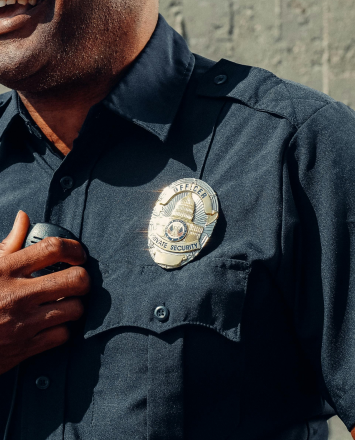Diamonds have long been symbols of love, commitment, and luxury. Whether you’re shopping for an engagement ring or a timeless piece of jewelry, understanding how to distinguish between real and fake diamonds is essential. With the rise of convincing diamond simulants and synthetic alternatives, spotting the genuine article requires a sharp eye and a little know-how. Let’s dive into this guide and uncover the secrets to identifying real diamonds like a pro.
Why It Matters
The jewelry market is flooded with options, ranging from natural diamonds to synthetic stones like moissanite, cubic zirconia, and lab-grown diamonds. While some of these alternatives can be high-quality, they don’t carry the same value, durability, or timeless appeal as a real diamond. Whether you’re investing in a diamond for its sentiment or resale value, you want to ensure you’re getting what you pay for.
Real Diamonds vs. Fake Diamonds: The Key Differences
1.Natural Diamonds
Natural diamonds are formed deep within the Earth’s mantle under immense heat and pressure over billions of years. This natural formation process gives diamonds their unique structure, brilliance, and durability.
2.Lab-Grown Diamonds
Lab-grown diamonds are chemically and physically identical to natural diamonds but are created in a laboratory. While they’re technically real diamonds, they’re often valued less because they lack the rarity of natural diamonds.
3.Simulants
Simulants like cubic zirconia (CZ) and moissanite mimic the appearance of diamonds but are composed of different materials. They’re more affordable but don’t have the same hardness or brilliance as a natural diamond.
How to Identify a Real Diamond
Here are some practical and easy-to-follow methods to distinguish a real diamond from a fake one:
1.The Fog Test
What it is: Hold the diamond close to your mouth and exhale on it as if you’re fogging up a mirror.
What to look for: A real diamond dissipates heat quickly so that the fog will clear almost instantly. A fake diamond, like CZ, will stay fogged for longer.
2.Check the Sparkle
What it is: Observe how the diamond reflects light.
What to look for: Real diamonds uniquely refract light, creating a mix of white light (brilliance) and rainbow-colored light (fire). Fake diamonds often lack this distinctive sparkle or appear overly rainbow-like.
3.Use a Loupe
What it is: A jeweler’s loupe is a small magnification tool used to inspect gemstones.
What to look for: Real diamonds usually have natural imperfections, known as inclusions, visible under a loupe. Simulants often appear flawless or have different kinds of surface blemishes.
4.Hardness Test
What it is: Diamonds are the hardest naturally occurring substance on Earth.
What to look for: Try scratching the surface of the stone with a sharp object. A real diamond won’t scratch, while many simulants will show damage. However, avoid doing this on an actual jewelry piece to prevent accidental damage.5.Water Test
What it is: Drop the diamond into a glass of water.
What to look for: A real diamond’s high density will cause it to sink to the bottom. Simulants like CZ may float or hover in the water.
6.UV Light Test
What it is: Expose the diamond to ultraviolet (UV) light.
What to look for: Many natural diamonds exhibit a bluish fluorescence under UV light, while others don’t. Fake diamonds may glow in different colors or not at all. Keep in mind this isn’t a definitive test.
7.Heat Conductivity
What it is: Diamonds are excellent conductors of heat.
What to look for: Use a thermal conductivity tester (available at most jewelry stores). Real diamonds conduct heat effectively, while fake ones don’t.
8.Seek Professional Appraisal
What it is: Take the diamond to a certified jeweler or gemologist.
What to look for: Professionals use advanced tools like spectroscopes and diamond testers to verify authenticity.
Common Myths About Diamonds
1.Real Diamonds Always Scratch Glass While diamonds are more complex than glass and can scratch them, many fake stones can also achieve this. It’s not a foolproof test.
2.Bigger Means Better A diamond’s value is determined by the 4 Cs: carat, cut, color, and clarity. Bigger doesn’t always mean higher quality or value.
3.Lab-Grown Diamonds Aren’t Real Diamonds Lab-grown diamonds have the same chemical composition and structure as natural diamonds. However, their value and origin differ.
How to Buy Diamonds Confidently
-
Look for Certification Always ask for a grading report from a reputable gemological laboratory like GIA (Gemological Institute of America) or AGS (American Gem Society). These certificates provide detailed information about the diamond’s quality and authenticity.
-
Buy from Reputable Jewelers Purchase diamonds from trusted jewelers with positive reviews and strong reputations. They’re more likely to provide accurate information and fair pricing.
-
Know Your Budget Decide whether you’re open to lab-grown diamonds or prefer natural stones. This choice can significantly impact your budget.
-
Ask Questions Don’t hesitate to ask about the diamond’s origin, treatments, and quality. A reputable jeweler will provide transparent answers.
Conclusion
When it comes to identifying real diamonds, a little knowledge goes a long way. By using the tests and tips in this guide, you can confidently assess whether a diamond is genuine or not. Remember, real diamonds carry a legacy of beauty and durability that simulants can’t replicate. So, whether you’re buying for a special occasion or as an investment, take your time, do your research, and consult professionals when in doubt. Your perfect diamond is out there—make sure it’s the real deal!





